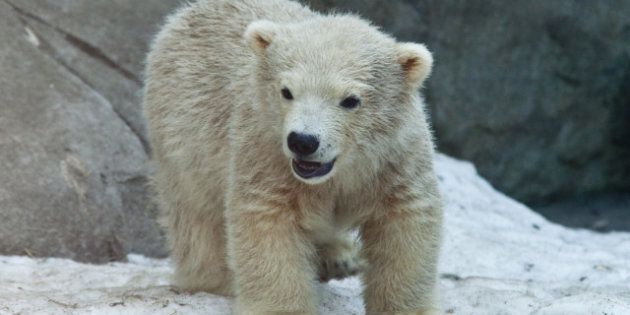
Things are starting to heat up for polar bears, in more ways than one. The United States, backed by the Russian Federation, has put forward what's turned out to be a controversial proposal to give polar bears greater protection by listing them on Appendix I of the Convention on International Trade in Endangered Species (CITES). If passed, this proposal would effectively ban international commercial trade in polar bear parts.
Canada, and Canadian Inuit, are fanning the flames of controversy and actively trying to block the proposal, claiming that the listing would pose a 'serious threat' to the Inuit way of life. This statement is not only an exaggeration, but it misses a much larger issue: polar bears could face extinction within our lifetime if we do not start taking action to protect them now.
Canada is home to some 15,000 of the planet's remaining 20,000-25,000 polar bears, with 13 of 19 recognized populations within our borders. Only one of these populations, with about 2 per cent of Canada's bears, is thought to be increasing, and this is because it was severely over-hunted in the past and is now recovering; the others are declining, stable, or we simply do not have enough data to determine population trends.
Canada is also the only country that allows the hunting of polar bears solely for the purpose of international trade and sport. About 600 polar bears are hunted annually in Canada, with over 400 of these ending up in commercial international trade, primarily as skins.
Canadian Inuit are actively opposing the uplisting, and have set out on a lobbying expedition to encourage European leaders to oppose the US proposal to give greater protection to polar bears. In fact, Inuit leader Terry Audla has publicly claimed -- contrary to all available data and international scientific consensus -- that climate change is not having a negative impact on polar bears, and that the Canadian polar bear population is increasing. Sadly, nothing could be further from the truth.
Blog continues below slideshow...
Climate change is a very serious threat to polar bears.
Scientists agree that polar bears are threatened with extinction. In fact, the decline in sea ice is expected to lead to the disappearance of two thirds of the world's polar bear populations within 45 years. It's hard to imagine that someday the only place we may see polar bears in Canada is on the front of a toonie.
Canadians want greater protection for polar bears.
As home to some 75 per cent of the world's remaining polar bears, and the only country to allow commercial and sport hunting of this species, it falls to Canada to take the lead in protecting polar bear populations. A new poll conducted by Environics Research Group found that 85 per cent of Canadians support giving polar bears greater protection through an Appendix I listing at CITES.
Stopping international commercial trade in polar bear parts will not be enough to save this species, but it is a crucial step.
We need to be realistic. Giving polar bears greater protection through an Appendix I listing on CITES is not a panacea to the threats facing the world's remaining polar bears. It will not even stop all hunting of polar bears. It will not affect the traditional hunting of polar bears by Inuit for hides and meat, nor will it stop trophy hunting by Canadians or foreigners, who use Inuit as hunting guides.
And while there is no question that climate change, and its impact on polar bear habitat, poses the greatest threat to this species, hunting for international commercial trade is the second largest threat, and one that can be easily addressed. If polar bears are to be saved, we need to do more than drink cans of Coke. We need to take every possible measure to reduce needless threats to this species.
Stopping the commercial trade in polar bear rugs is one small -- but critical -- step towards securing a future for polar bears.
Delegates from Canada and other signatories will vote on the proposed uplisting at the 16th Meeting of the Conference of the Parties (CoP16) to CITES, 3-14 March 2013.
Please take action and let the government of Canada know you want to see greater protection for polar bears, starting by supporting a ban on the international commercial trade of polar bear parts.
